Charles G Rhoades
Deceased
from Veneta, OR
- Also known as:
-
- Charles Gilbert Rhoades
- Charls G Rhoades
- Chas G Rhoades
- Charles G Rhodes
Charles Rhoades Phones & Addresses
- Veneta, OR
- Elmira, OR
- Reno, NV
- San Leandro, CA
- Alameda, CA
Medicine Doctors

Charles E. Rhoades
view sourceDescription:
Dr. Rhoades graduated from the University of Kansas School of Medicine in 1978. He works in Leawood, KS and 1 other location and specializes in Orthopaedic Surgery. Dr. Rhoades is affiliated with Kansas City Orthopaedics Institute, Saint Lukes Hospital Of Kansas City and Saint Lukes South Hospital.
Lawyers & Attorneys

Charles Rhoades - Lawyer
view sourceOffice:
C. R. Rhoades, P.C.
Specialties:
Criminal Defense
ISLN:
902179392
Admitted:
1973
University:
Southwest Missouri State University, B.S., 1970
Law School:
University of Missouri, J.D., 1973

Charles Rhoades - Lawyer
view sourceISLN:
902179392
Admitted:
1973
University:
Southwest Missouri State University, B.S., 1970
Law School:
University of Missouri, J.D., 1973
Name / Title
Company / Classification
Phones & Addresses
President
Satcon Power Systems, Inc
Mfg Semiconductors/Related Devices
Mfg Semiconductors/Related Devices
Us Patents
-
Apparatus For Processing Workpieces
view source -
US Patent:6454367, Sep 24, 2002
-
Filed:Jan 2, 2001
-
Appl. No.:09/446432
-
Inventors:Charles Stephen Rhoades - Diablo CA
-
Assignee:Trikon Equipments Limited - Newport
-
International Classification:B65G 104
-
US Classification:312198
-
Abstract:Radial cluster tools, for example, include a central load/unload station and processing chambers for processing workpieces, such as semiconductor wafers. The processing chambers are arranged about the central load/unload station in abutting pairs to leave substantial maintenance spaces.
-
Plasma Etching Using Xenon
view source -
US Patent:53840097, Jan 24, 1995
-
Filed:Jun 16, 1993
-
Appl. No.:8/078131
-
Inventors:Steven Mak - Pleasanton CA
Brian Shieh - Fremont CA
Charles S. Rhoades - Los Gatos CA -
Assignee:Applied Materials, Inc. - Santa Clara CA
-
International Classification:H01L 2100
-
US Classification:156662
-
Abstract:A process for selectively etching a substrate, having grain boundaries and a resist material thereon, is described. The substrate is placed into an etch zone and a process gas comprising a primary etchant, a secondary etchant, and xenon is introduced into the etch zone. A plasma is generated in the zone to form an etch gas from the process gas, that substantially anisotropically etches the substrate at fast rates, with good selectivity, and reduced profile microloading. Preferably the primary etchant comprises Cl. sub. 2, and the secondary etchant comprises BCl. sub. 3.
-
Passivating, Stripping And Corrosion Inhibition Of Semiconductor Substrates
view source -
US Patent:55452892, Aug 13, 1996
-
Filed:Jun 29, 1994
-
Appl. No.:8/268377
-
Inventors:Jian Chen - Santa Clara CA
James S. Papanu - San Rafael CA
Carmel Ish-Shalom - Kiriat Motzkin, IL
Peter Hsieh - Sunnyvale CA
Wesley G. Lau - San Jose CA
Charles S. Rhoades - Simi Valley CA
Brian Shieh - Hualien, TW
Ian S. Latchford - Sunnyvale CA
Karen A. Williams - Santa Clara CA
Victoria Yu-Wang - Los Altos CA -
Assignee:Applied Materials, Inc. - Santa Clara CA
-
International Classification:H01L 2100
-
US Classification:1566431
-
Abstract:A process for passivating, and optionally stripping and inhibiting corrosion of an etched substrate (20), is described. In the process, a substrate (20) having etchant byproducts (24) thereon, is placed into a vacuum chamber (52), and passivated in a multicycle passivation process comprising at least two passivating steps. In each passivating step, passivating gas is introduced into the vacuum chamber (52) and a plasma is generated from the passivating gas. When the substrate also has remnant resist (26) thereon, the resist (26) is stripped in a multicycle passivation and stripping process, each cycle including a passivating step and a stripping step. The stripping step is performed by introducing a stripping gas into the vacuum chamber (52) and generating a plasma from the stripping gas. In the multicycle process, the passivating and optional stripping steps, are repeated at least once in the same order that the steps were done. Alternatively, the substrate (20) can also be passivated in a single cycle process using a passivating gas comprising water vapor, oxygen, and nitrogen.
-
Method For Reducing Particulate Contamination During Plasma Processing Of Semiconductor Devices
view source -
US Patent:54239184, Jun 13, 1995
-
Filed:Sep 21, 1993
-
Appl. No.:8/124900
-
Inventors:Anand Gupta - San Jose CA
Charles S. Rhoades - Los Gatos CA
Yan Ye - Campbell CA
Joseph Lanucha - Sunnyvale CA -
Assignee:Applied Materials, Inc. - Santa Clara CA
-
International Classification:B08B 600
-
US Classification:134 1
-
Abstract:A technique for removing particles from above a semiconductor wafer, particularly particles that are trapped in a plasma chamber during processing of the wafer. Trapped particles are usually not all drawn out with gases exhausted from the chamber, in part because a peripheral focus ring and clamping mechanism impede their flow. In the method of the invention, the focus ring and clamping mechanism are raised on completion of processing, but before radio-frequency (rf) power is disconnected from the process chamber. Trapped particles are then easily flowed from the chamber with an introduced inert gas, and the level of particulate contamination of the wafer is significantly reduced.
-
Etching Aluminum And Its Alloys Using Hc1, C1-Containing Etchant And N.sub. 2
view source -
US Patent:53875567, Feb 7, 1995
-
Filed:Feb 24, 1993
-
Appl. No.:8/021831
-
Inventors:Diana M. Xiaobing - San Jose CA
Charles S. Rhoades - Los Gatos CA -
Assignee:Applied Materials, Inc. - Santa Clara CA
-
International Classification:H01L 21283
-
US Classification:437228
-
Abstract:A process for etching aluminum from a substrate, where portions of the aluminum are protected by a resist material, is described. The substrate is placed into a chamber and a process gas comprising HCl, Cl-containing etchant and N. sub. 2 is introduced in the chamber. A plasma is generated in the chamber to generate from the process gas an etch gas that etches aluminum from the substrate at fast rates, with good selectivity, reduced profile microloading, and substantially only anisotropic etching.
-
Controlling Plasma Particulates By Contouring The Plasma Sheath Using Materials Of Differing Rf Impedances
view source -
US Patent:54945232, Feb 27, 1996
-
Filed:Feb 23, 1995
-
Appl. No.:8/393527
-
Inventors:Robert J. Steger - Cupertino CA
Charles S. Rhoades - Los Gatos CA
Anand Gupta - San Jose CA -
Assignee:Applied Materials, Inc. - Santa Clara CA
-
International Classification:H01L 2100
C23C 100 -
US Classification:118723E
-
Abstract:A plasma processing apparatus including a wafer supporting pedestal which is designed to reduce particle trapping phenomena. In a region of the pedestal surface which surrounds or abuts the wafer, the pedestal has a permittivity which is substantially equal to or greater than that of the wafer surface. As a result, the sheath boundary is reshaped to reduce particle trapping.
Resumes

Charles Rhoades
view sourceSkills:
Microsoft Office

Charles Rhoades
view sourceLocation:
United States

Charles Rhoades
view sourceLocation:
United States
Youtube
Myspace
Flickr
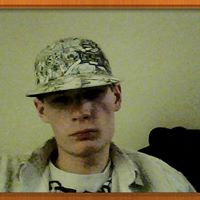
Charles Rhoades
view source
Charles Rhoades
view source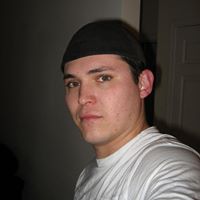
Charles Rhoades
view source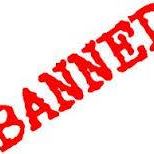
Charles Rhoades
view source
Charles Rhoades
view source
Charles Rhoades
view source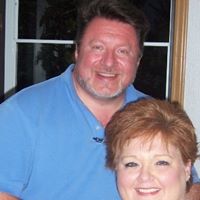
Charles N Rhoades
view source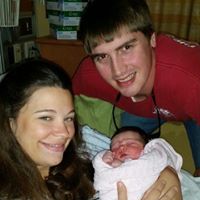
Charles Joshua Rhoades
view sourceGoogleplus

Charles Rhoades
Relationship:
Married
About:
I have a certificate from the state of Ohio that states I am legally "No longer a danger to myself or others."
Classmates

Charles Rhoades
view sourceSchools:
Twin Valley North High School Lewisburg OH 1980-1984
Community:
Ginger Fink, Sheila Cassel, Connie Marcum, Terrie Hawley

Charles Rhoades
view sourceSchools:
Chapel Heights High School Marion IN 1979-1982
Community:
Connie Alsip

Charles Rhoades
view sourceSchools:
Assumption High School Assumption IL 1958-1964
Community:
Kathy Dalton, Michelle Moore, Robert Thiele, Joanna Lewis, Teresa Hubbs

Charles Rhoades
view sourceSchools:
Picher-Cardin High School Picher OK 1957-1961
Community:
Irene Cragg, Jacqueline Smith, Phillip Graham, Danny Garner, Billie Olds, Kenneth Fisher, Janice Crockett, Pat Sedberry, Larry Carey, Bill Beam, Merle Nichols

Charles Rhoades
view sourceSchools:
Macon High School Macon MO 1990-1994
Community:
Brandi Higbee, Amy Lawrence, J Davolt, Jeannie Cross

Charles Rhoades
view sourceSchools:
Oak Ridge Military High School Oak Ridge NC 1968-1972
Community:
Cecil Cottrell, Steven Aanes, Glenn Phillips, Teresa O'connell, Dale Fain, Carrington Thompson

Charles Rhoades
view sourceSchools:
Rockhurst High School Kansas City MO 1994-1998
Community:
Max Howell, Mark Schramp, Andew Ritter, Ross Lipari, Patrick Mcgilley, Daniel Shouse, Brian Wachel, M M, Louie Sampson, Wesley Rothove, Gregory Loeffelholz

Charles Rhoades | Santa F...
view sourceGet Report for Charles G Rhoades from Veneta, ORDeceased
















